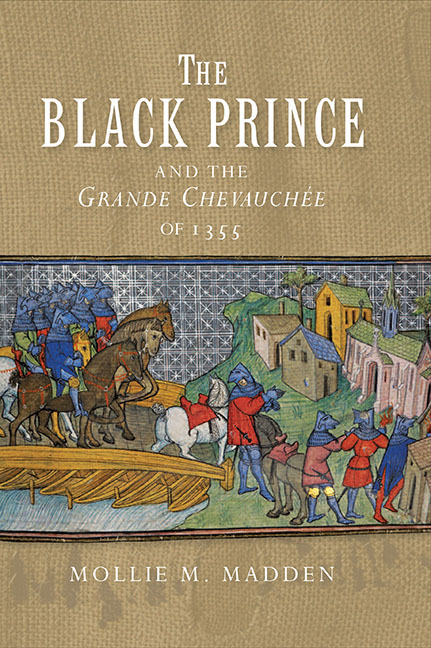Book contents
- Frontmatter
- Dedication
- Contents
- List of Illustrations
- Acknowledgements
- List of Abbreviations
- A Note on Measurements
- Map
- Introduction
- 1 The Preparations for the Chevauchée: England's Existing System of Purveyance
- 2 A Competent Military Force: England's Existing System of Recruitment
- 3 The Campaign to Narbonne: An Efficient System of Supply
- 4 The Return to Bordeaux: A Test of Endurance
- 5 After the Campaign
- Conclusion
- Appendix 1 Ships of the Prince's Fleet
- Appendix 2 Edward of Woodstock's Army
- Appendix 3 The Prince's March
- Appendix 4 Financial Tables
- Bibliography
- Index
- Warfare in History
- Frontmatter
- Dedication
- Contents
- List of Illustrations
- Acknowledgements
- List of Abbreviations
- A Note on Measurements
- Map
- Introduction
- 1 The Preparations for the Chevauchée: England's Existing System of Purveyance
- 2 A Competent Military Force: England's Existing System of Recruitment
- 3 The Campaign to Narbonne: An Efficient System of Supply
- 4 The Return to Bordeaux: A Test of Endurance
- 5 After the Campaign
- Conclusion
- Appendix 1 Ships of the Prince's Fleet
- Appendix 2 Edward of Woodstock's Army
- Appendix 3 The Prince's March
- Appendix 4 Financial Tables
- Bibliography
- Index
- Warfare in History
Summary
On 19 September 1356 Edward of Woodstock (1330–1376) and his Anglo- Gascon army defeated Jean II (1319–1364) of France at the Battle of Poitiers. In many ways, this victory was the culmination of the Prince's expedition that began in 1355. The Prince could not have anticipated such a triumph when he and his army left Plymouth in September 1355 and sailed to Bordeaux. His campaign was Edward III's (1312–1377) response to the Gascon lords’ appeal for help in resisting the French, specifically the military actions of Jean I, count of Armagnac (1311–1373). The Prince campaigned through southern France – from Bordeaux to Narbonne and back – in the fall of 1355, but the victory at Poitiers often overshadows the successes of the 1355 campaign. The 1355 chevauchée, one of the fast-moving raids that were a common feature of English warfare in this period, is typically cast as the prelude to Poitiers. Indeed, a recent title states this relationship explicitly: In the Steps of the Black Prince: The Road to Poitiers, 1355–1356. While the two campaigns of 1355 and 1356 were part of the same expedition, each needs to be assessed and examined individually. The 1355 chevauchée should be understood as a discrete campaign, not solely as the prelude to Poitiers. As such, it can be a case study of the logistics of a chevauchée, useful because there were no extraordinary battles. It was typical in that the Prince's army had to be transported from England to the continent and cross lands held by the English, Gascons, potential allies, and enemies, which necessitated the army pursuing a variety of strategies for acquiring supplies. This campaign demonstrates that a chevauchée needed logistical support; moreover, the logistics speak to the Prince's goals for this specific campaign and more generally to Edward III's larger strategy. Thus, the logistics are a method for understanding decisions made during a campaign, decisions that might otherwise remain opaque.
While the roots of the Hundred Years War are well known and need not be restated here, a few words about the war's progress in Gascony in the decade preceding the campaign are necessary. English and Gascon forces led by Henry of Grosmont (1310–1361), the earl of Lancaster as of 1345, retook Bergerac, La Réole and Aiguillon in Gascony during Lancaster's campaigns of 1345–1346.
- Type
- Chapter
- Information
- The Black Prince and the Grande Chevauchée of 1355 , pp. 1 - 14Publisher: Boydell & BrewerPrint publication year: 2018

